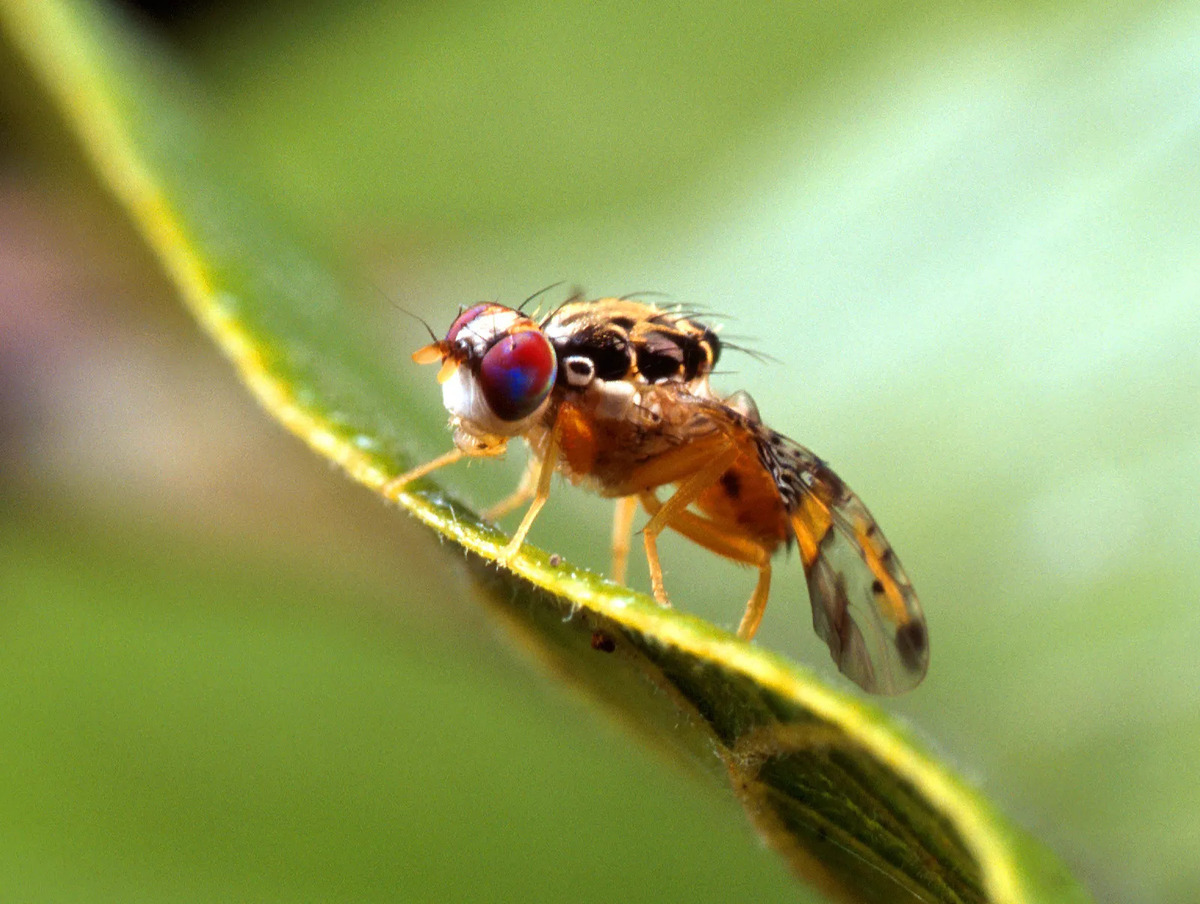
Fruit flies might seem like tiny, annoying insects buzzing around your kitchen, but they hold a treasure trove of fascinating facts. Did you know these little critters have been crucial in scientific research for over a century? Fruit flies are not just pests; they have a short life cycle and simple genetics, making them perfect for genetic studies. Their entire genome has been mapped, revealing insights into human biology. Plus, they can lay up to 500 eggs in their short lifespan! Intrigued yet? Let’s dive into 19 amazing facts about these tiny but mighty insects.
What Are Fruit Flies?
Fruit flies are tiny insects often found buzzing around ripe or rotting fruits. Despite their small size, they have some fascinating characteristics.
-
Scientific Name: The scientific name for the common fruit fly is Drosophila melanogaster. This species is widely used in genetic research.
-
Size: Fruit flies are very small, typically measuring about 1/8 inch in length. Their size makes them easy to overlook until they become a nuisance.
-
Lifespan: These insects have a short lifespan, living only about 40 to 50 days. However, they can reproduce rapidly within this period.
Fruit Fly Reproduction
Fruit flies are known for their rapid reproduction rates, which can lead to large infestations in a short time.
-
Egg Laying: A female fruit fly can lay up to 500 eggs in her lifetime. She usually deposits these eggs on the surface of fermenting fruit or other organic material.
-
Development Time: It takes about 8 to 10 days for a fruit fly to develop from an egg to an adult. This quick development cycle contributes to their rapid population growth.
-
Breeding Sites: Fruit flies prefer to breed in moist, fermenting substances. Overripe fruits, vegetables, and even drains can serve as breeding grounds.
Fruit Fly Behavior
Understanding the behavior of fruit flies can help in managing and preventing infestations.
-
Attraction to Fermentation: Fruit flies are attracted to the smell of fermentation. This is why they are often found around ripe or rotting fruits and vegetables.
-
Activity Patterns: These insects are most active during the day, especially in the early morning and late afternoon. They tend to rest at night.
-
Flight Ability: Despite their small size, fruit flies are strong fliers. They can travel considerable distances in search of food and breeding sites.
Fruit Flies in Research
Fruit flies have played a significant role in scientific research, particularly in genetics.
-
Model Organism: Drosophila melanogaster is a model organism in genetics research. Scientists use them to study gene function and inheritance patterns.
-
Nobel Prizes: Research involving fruit flies has led to several Nobel Prizes in Physiology or Medicine. Their simple genetic structure makes them ideal for studying complex biological processes.
-
Genetic Similarity: Surprisingly, fruit flies share about 60% of their genes with humans. This genetic similarity allows researchers to study human diseases using fruit flies.
Fruit Fly Control
Managing fruit fly infestations requires understanding their habits and taking appropriate measures.
-
Prevention: The best way to control fruit flies is to prevent infestations. Keep kitchen areas clean, dispose of overripe fruits, and cover trash cans.
-
Traps: Homemade traps using apple cider vinegar or wine can effectively capture fruit flies. The sweet smell attracts them, and they become trapped in the liquid.
-
Natural Predators: Spiders, ants, and certain types of beetles are natural predators of fruit flies. Encouraging these predators can help control fruit fly populations.
Fun and Unusual Facts
Fruit flies have some quirky and unusual traits that make them interesting beyond their role as pests.
-
Alcohol Tolerance: Fruit flies have a high tolerance for alcohol. They can survive in environments with high levels of ethanol, which is often found in fermenting fruits.
-
Courtship Rituals: Male fruit flies perform elaborate courtship dances to attract females. These dances involve wing vibrations and specific movements.
-
Memory: Fruit flies have a surprisingly good memory. They can remember the location of food sources and return to them even after several days.
-
Space Travel: Fruit flies were among the first living creatures sent into space. In 1947, they were launched aboard a U.S. V-2 rocket to study the effects of radiation exposure at high altitudes.
Fascinating World of Fruit Flies
Fruit flies, tiny as they are, pack a punch in the world of science and everyday life. These little critters have helped scientists make groundbreaking discoveries in genetics, thanks to their short lifespans and rapid reproduction. They’re not just lab heroes; fruit flies also play a role in our kitchens, often appearing around ripe or rotting fruit.
Understanding their behavior and life cycle can help us manage them better at home. Simple tricks like keeping your kitchen clean, storing fruit properly, and using traps can keep these pests at bay.
Next time you see a fruit fly, remember they’re more than just a nuisance. They’re tiny marvels that have contributed immensely to science. So, whether you’re a science enthusiast or just someone trying to keep your kitchen fly-free, these facts about fruit flies are sure to come in handy.
Was this page helpful?
Our commitment to delivering trustworthy and engaging content is at the heart of what we do. Each fact on our site is contributed by real users like you, bringing a wealth of diverse insights and information. To ensure the highest standards of accuracy and reliability, our dedicated editors meticulously review each submission. This process guarantees that the facts we share are not only fascinating but also credible. Trust in our commitment to quality and authenticity as you explore and learn with us.


